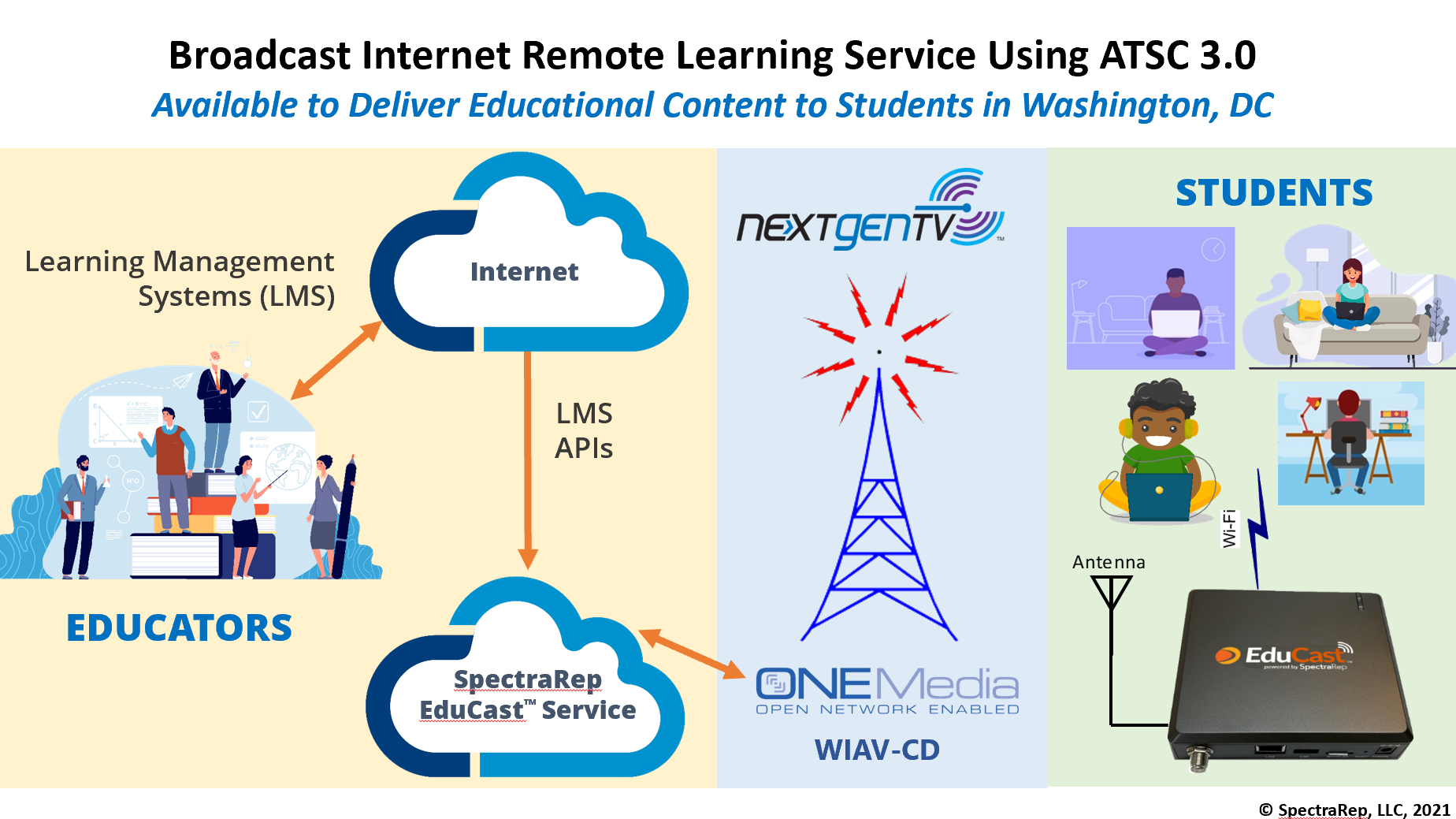NextGen TV Being Used To Deliver Remote Learning in Washington, D.C.
Signal from Sinclair’s WIAV provides wireless data network for kids without broadband access

The new TV broadcast technology, known as NextGen TV or ATSC 3.0, is being used to deliver remote learning services to kids in Washington, D.C., who might not have access to traditional broadband.
SpectraRep, an education technology company, said it is working with Sinclair Broadcast Group’s tech company One Media 3.0 and its D.C. station WIAV-CD to deliver EduCast. EduCast is SpectraRep’s broadcast internet product for K-12 and college learners without broadband internet services at home.
The TV industry, including Sinclair, has been rolling out ATSC 3.0. In addition to providing viewers with better picture and sound quality and additional channels, ATSC 3.0 is able to deliver internet content and data services such as EduCast within a station’s broadcast footprint to both fixed and mobile receivers.
“When the ATSC 3.0 standard was ratified, we knew it could dramatically improve our service offerings due to its native IP architecture, increased data capacity, and better reception characteristics,” said John McCoskey, COO of SpectraRep. “Our goal was to enhance our services to operate using both ATSC 1.0 and ATSC 3.0 transmission systems and to provide stations and end users a simple, no-cost transition from one to the other. At the station that means just configuration changes and moving a few cables.”
Also Read: NextGen TV’s Busy Summer Sets Up Fall Events
SpectraRep worked with a company called DigiCAP to create an in-home receiver that can operate using both the current ATSC 1.0 standard as well as the NextGen TV standard ATSC 3.0.
“Despite the worldwide chip shortages and manufacturing hold ups caused by the pandemic, we were able to adapt our manufacturing pipeline to meet these challenges and deliver the badly needed devices that were intricately important to the overall success of the EduCast system,” said Joonyoung Park, VP at DigiCAP.
Broadcasting & Cable Newsletter
The smarter way to stay on top of broadcasting and cable industry. Sign up below
The DigiCAP receiver connects to a TV antenna that receives the broadcast signal digital content it carries. The receiver establishes a Wi-Fi hotspot in the home that students connect to with their tablet, laptop, or smartphone. The receiver stores up to 128 gigabytes of content such as videos, presentation slides, worksheets, interactive documents, and images.
SpectraRep said that EduCast is operational and available in 12 states using ATSC 1.0. It has procured tens of thousands of in-home receivers and it hopes to expand in to more ATSC 3.0 markets.
“When the Covid-19 pandemic hit the country and students and teachers were sent home, we saw the negative impacts on remote learners without access to adequate broadband,” said Mark O'Brien, president and CTO of SpectraRep. “Issues like homework gaps and equity in education became even more acute, and we quickly realized we could help to bridge the digital divide through our technology and the enhanced advances offered by ATSC 3.0, in the same way we’ve supported public safety and law enforcement customers.”
Jon has been business editor of Broadcasting+Cable since 2010. He focuses on revenue-generating activities, including advertising and distribution, as well as executive intrigue and merger and acquisition activity. Just about any story is fair game, if a dollar sign can make its way into the article. Before B+C, Jon covered the industry for TVWeek, Cable World, Electronic Media, Advertising Age and The New York Post. A native New Yorker, Jon is hiding in plain sight in the suburbs of Chicago.

